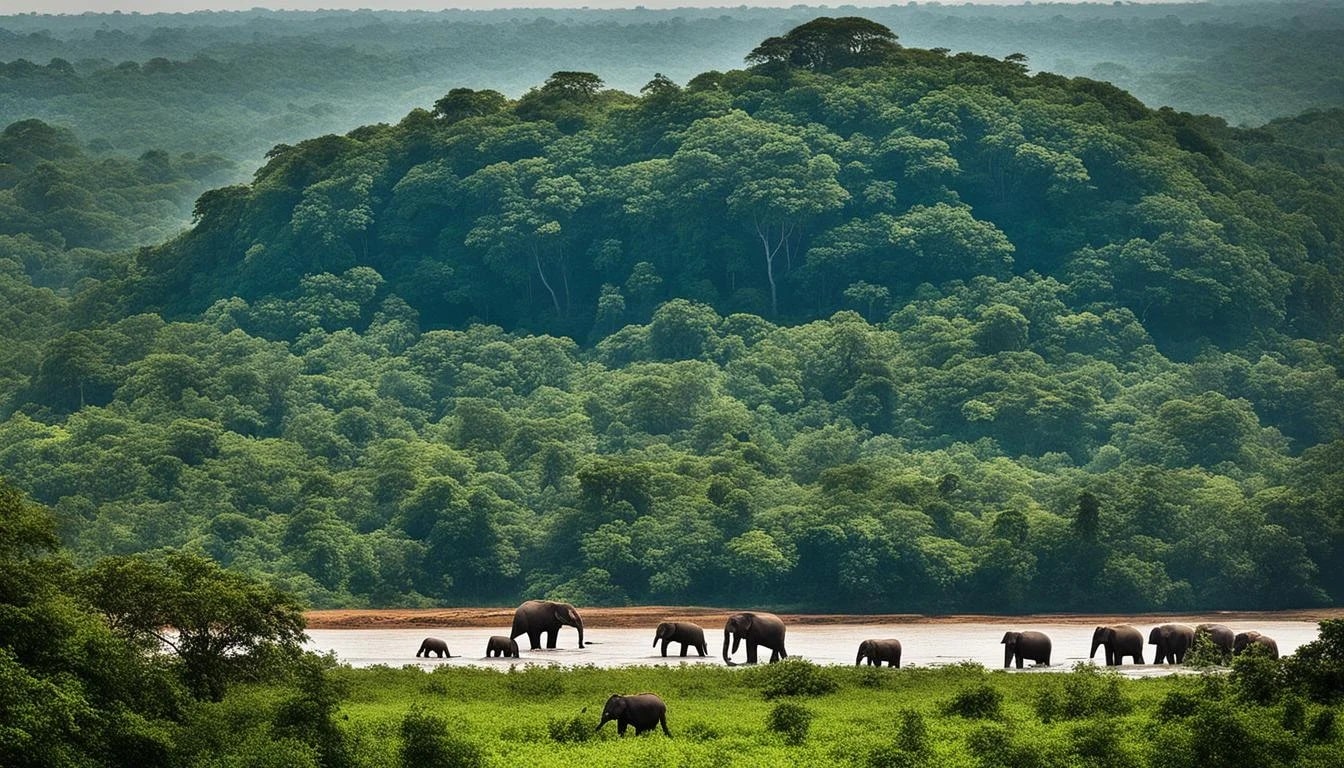
What makes the Central African Republic unique? This landlocked country in the heart of Africa boasts a rich tapestry of cultures, languages, and wildlife. Despite facing numerous challenges, the Central African Republic (CAR) remains a place of incredible natural beauty and resilience. From the dense rainforests teeming with rare species to the vibrant traditions of its diverse ethnic groups, CAR offers a glimpse into a world that is both ancient and ever-changing. Did you know that CAR is home to the Manovo-Gounda St. Floris National Park, a UNESCO World Heritage site? Or that the country has one of the largest populations of forest elephants? Join us as we explore 15 fascinating facts about this remarkable nation.
Key Takeaways:
- Central African Republic is a diverse landlocked country in Africa, with rich wildlife and natural resources, but also facing challenges of political instability and civil unrest.
- The country's vibrant culture, with over 80 ethnic groups, contributes to its rich heritage, and its economy is primarily based on agriculture, mining, and forestry.
Geography and Landscape
The Central African Republic (CAR) is a landlocked country in the heart of Africa. Its diverse landscapes range from savannas to dense forests.
- CAR is bordered by six countries: Chad, Sudan, South Sudan, the Democratic Republic of the Congo, the Republic of the Congo, and Cameroon.
- The country covers an area of about 240,000 square miles, making it slightly smaller than Texas.
- The Ubangi River, one of the major rivers in Africa, flows through CAR, providing a vital water source for agriculture and daily life.
- CAR is home to the Manovo-Gounda St. Floris National Park, a UNESCO World Heritage site known for its rich biodiversity.
History and Politics
CAR has a complex history marked by periods of colonization, independence, and political instability.
- The country gained independence from France on August 13, 1960.
- Jean-Bédel Bokassa, a military officer, declared himself emperor in 1976, ruling the country as the Central African Empire until he was overthrown in 1979.
- CAR has experienced multiple coups and periods of civil unrest, with the most recent conflict starting in 2012.
- Despite its challenges, CAR has a vibrant culture with over 80 ethnic groups, each contributing to the country's rich heritage.
Economy and Resources
The economy of CAR is primarily based on agriculture, mining, and forestry.
- Diamonds are one of the country's most significant exports, accounting for a substantial portion of its GDP.
- CAR has vast natural resources, including gold, uranium, and timber, but political instability has hindered their full exploitation.
- Subsistence farming is the main livelihood for most of the population, with crops like cassava, yams, and maize being staples.
Wildlife and Conservation
CAR is a haven for wildlife enthusiasts, boasting a variety of unique species and conservation areas.
- The Dzanga-Sangha Special Reserve is famous for its population of forest elephants and western lowland gorillas.
- CAR is one of the few places where you can find the elusive bongo antelope, a rare and strikingly beautiful species.
- Efforts are ongoing to protect the country's wildlife from poaching and habitat destruction, with several international organizations involved in conservation projects.
Culture and Society
The people of CAR have a rich cultural heritage, reflected in their traditions, music, and art.
- Traditional music in CAR often features instruments like the balafon, a type of wooden xylophone, and the mbira, also known as a thumb piano.
The Heart of Africa
Central African Republic, often overlooked, holds a treasure trove of fascinating facts. From its rich biodiversity to its complex history, this nation offers a unique glimpse into the heart of Africa. The rainforests teem with wildlife, including rare species like the forest elephant and lowland gorilla. Its cultural tapestry is woven with diverse ethnic groups, each contributing to the nation's vibrant traditions and languages.
Despite facing numerous challenges, including political instability and economic hardships, the Central African Republic remains resilient. The people’s spirit and the country's natural beauty continue to shine through. Understanding these facts not only broadens our knowledge but also fosters a deeper appreciation for this remarkable country.
Next time you think of Africa, remember the Central African Republic. It's more than just a spot on the map; it's a land of stories, struggles, and strength.
Frequently Asked Questions
Was this page helpful?
Our commitment to delivering trustworthy and engaging content is at the heart of what we do. Each fact on our site is contributed by real users like you, bringing a wealth of diverse insights and information. To ensure the highest standards of accuracy and reliability, our dedicated editors meticulously review each submission. This process guarantees that the facts we share are not only fascinating but also credible. Trust in our commitment to quality and authenticity as you explore and learn with us.


